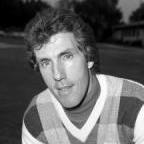IGNORED
Strength and Depth of Field in Jack's Day and Tiger's Day
Strength and Depth of Field
90 members have voted
-
Topics Being Discussed Right Now on The Sand Trap
-
- 6,657 replies
- 264,578 views
-
- 22 replies
- 970 views
-
- 8 replies
- 435 views
-
"5 Minutes Daily" Practice Challenge 1 2 3 4 842
By iacas, in Instruction and Playing Tips
- 5 minutes daily
- dedication
- (and 6 more)
- 15,142 replies
- 914,785 views
-
- 688 replies
- 121,387 views
-






Recommended Posts
Create an account or sign in to comment
You need to be a member in order to leave a comment
Create an account
Sign up for a new account in our community. It's easy!
Register a new accountSign in
Already have an account? Sign in here.
Sign In Now